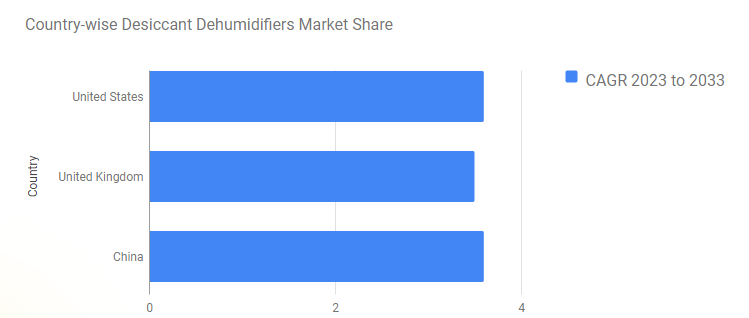In the battle against moisture, desiccant dehumidifiers emerge as powerful warriors. Unlike their compressor-based counterparts, they excel in low-temperature and low-humidity environments, making them ideal for a variety of applications. Let’s delve into the diverse applications where desiccant dehumidifiers reign supreme and explore the exciting opportunities that propel this growing market.
Applications: Where Desiccants Conquer Humidity
Desiccant dehumidifiers find themselves at the forefront of humidity control in various sectors:
- Industrial Processes: Moisture control is critical in numerous industrial processes, from food and pharmaceutical production to electronics manufacturing and chemical processing. Desiccants excel in these low-temperature environments, preventing product spoilage, ensuring consistent product quality, and protecting sensitive equipment from corrosion.
- Construction Sites: Drying out newly constructed buildings before installing flooring or painting requires efficient dehumidification. Desiccants effectively remove construction moisture, accelerating the drying process and preventing mold growth.
- Data Centers: Sensitive electronic equipment in data centers requires strict humidity control to prevent overheating and malfunctions. Desiccants provide precise humidity control, ensuring optimal operating conditions for critical IT infrastructure.
- Indoor Pools and Ice Rinks: These facilities struggle with excess moisture leading to condensation, mold growth, and slippery surfaces. Desiccants effectively remove moisture from the air, maintaining a comfortable and safe environment for users.
- Archives and Museums: Preserving historical artifacts and artwork necessitates strict humidity control. Desiccants create a stable environment, preventing damage from moisture and ensuring the longevity of valuable collections.
Get Exclusive Sample Copy of the Report: https://www.futuremarketinsights.com/reports/sample/rep-gb-17432
Opportunities: A Market Brimming with Potential
The desiccant dehumidifier market offers promising opportunities for growth:
- Rising Demand for Energy-Efficient Solutions: Advancements in desiccant technology are leading to more energy-efficient models, making them a more attractive option for cost-conscious businesses.
- Focus on Indoor Air Quality: Growing awareness of the importance of indoor air quality is driving demand for dehumidifiers to control moisture and prevent mold growth, particularly in areas with high humidity.
- Expansion into Emerging Markets: Rapid urbanization and industrialization in developing economies are creating a demand for dehumidification solutions, with desiccant technology well-suited for these regions.
- Development of Smart Dehumidifiers: Integration of smart features like remote control and Wi-Fi connectivity can enhance user convenience and optimize dehumidification processes.
- Focus on Sustainability: Development of eco-friendly desiccant materials and dehumidification processes with lower environmental impact can expand market appeal.
The desiccant dehumidifiers market is predicted to be valued at USD 573.4 million in 2023 and USD 822.4 million by 2033. Over the projection period, sales in the desiccant dehumidifiers market are expected to increase at a CAGR of 3.7%. While established markets like North America and Europe dominate the industry, emerging markets in Asia Pacific, Latin America, and the Middle East are expected to offer significant growth opportunities.
 Challenges and Considerations:
Challenges and Considerations:
- Higher Initial Cost: Desiccant dehumidifiers typically have a higher initial cost compared to compressor-based models.
- Maintenance Needs: Regular desiccant regeneration is required, which can add to maintenance costs.
- Noise Levels: Some desiccant dehumidifiers can be noisier than compressor models, requiring consideration for noise-sensitive environments.
Get Full Report Now: https://www.futuremarketinsights.com/checkout/17432



